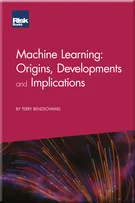Theory of money
Theory of money
Introduction: Money is information on the move
Trends in digital money
How digital money creates new operational risks
Operational risk and cryptography
Operational risks of digital money
Commercial bank digital money
Private digital money, including cryptocurrencies
Public digital money, including CBDCs
Impact of digitisation on operational risk management
Impact of digitisation on operational risk organisations
Impact of digital money and operational resilience on ORM processes and people
Impact of digitisation on operational risk management in the future
Theory of money
Information theory
Classical cryptography
Modern cryptography
Conclusion
Acknowledgements
Appendix 1: Significant contributors to information theory and cryptography
Appendix 2: Timeline of significant contributions to information theory and cryptography
Appendix 3: Relevant information standards
Appendix 4: High-level risk registers
Bibliography
This chapter describes some of the key concepts of the theory of money, beginning with the question: “why has money been used, in almost every society, on every continent and over time?” By understanding why money is used, we can then address key questions such as “what are the properties of money that make it ‘money’?” and “in the digital age, how will money change (Adrian and Mancini-Griffoli, 2019)?”
Money is essential to trade, and it is trust in a particular form of money that allows commerce within, and between, societies to grow. Money is the engine oil of every economy and essential to economic progress. However, when trust in money is undermined, economies can grind to a halt in a bout of hyperinflation. Money really does make the economic world go around,11 From the lyrics of “Money, Money, Money”, from the theatrical show and film Cabaret, composed by John Kander with lyrics by Fred Ebb. until it dries up!22 Davies (2002) notes that the claim that money makes the world go around is “comically exaggerated”.
For millennia, money has been passed between people in physical forms, such as shells and salt, to coins made of precious or base metal, and notes made of paper, one of
Copyright Infopro Digital Limited. All rights reserved.
As outlined in our terms and conditions, https://www.infopro-digital.com/terms-and-conditions/subscriptions/ (point 2.4), printing is limited to a single copy.
If you would like to purchase additional rights please email info@risk.net
Copyright Infopro Digital Limited. All rights reserved.
You may share this content using our article tools. As outlined in our terms and conditions, https://www.infopro-digital.com/terms-and-conditions/subscriptions/ (clause 2.4), an Authorised User may only make one copy of the materials for their own personal use. You must also comply with the restrictions in clause 2.5.
If you would like to purchase additional rights please email info@risk.net











